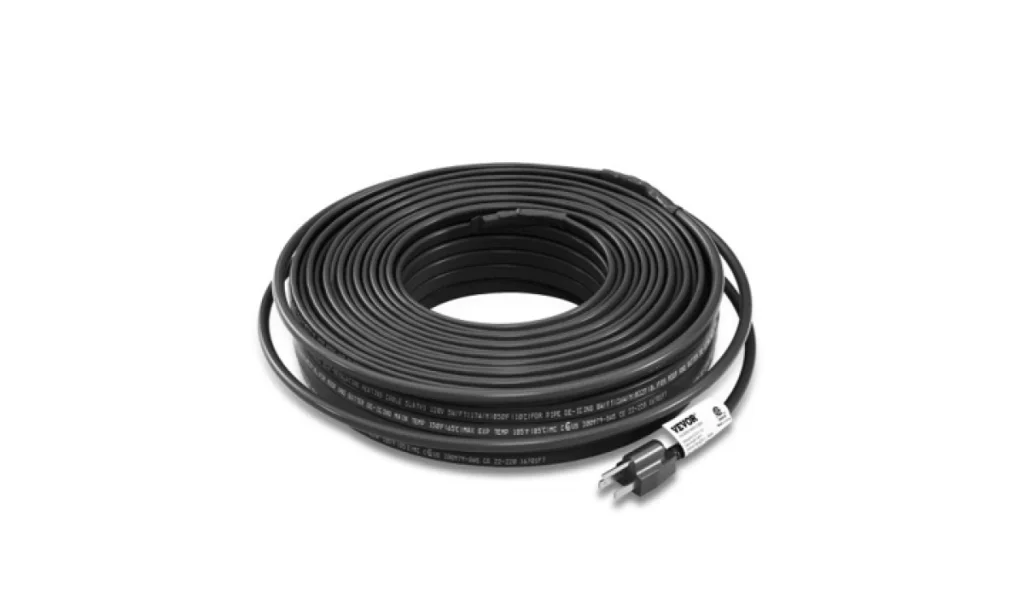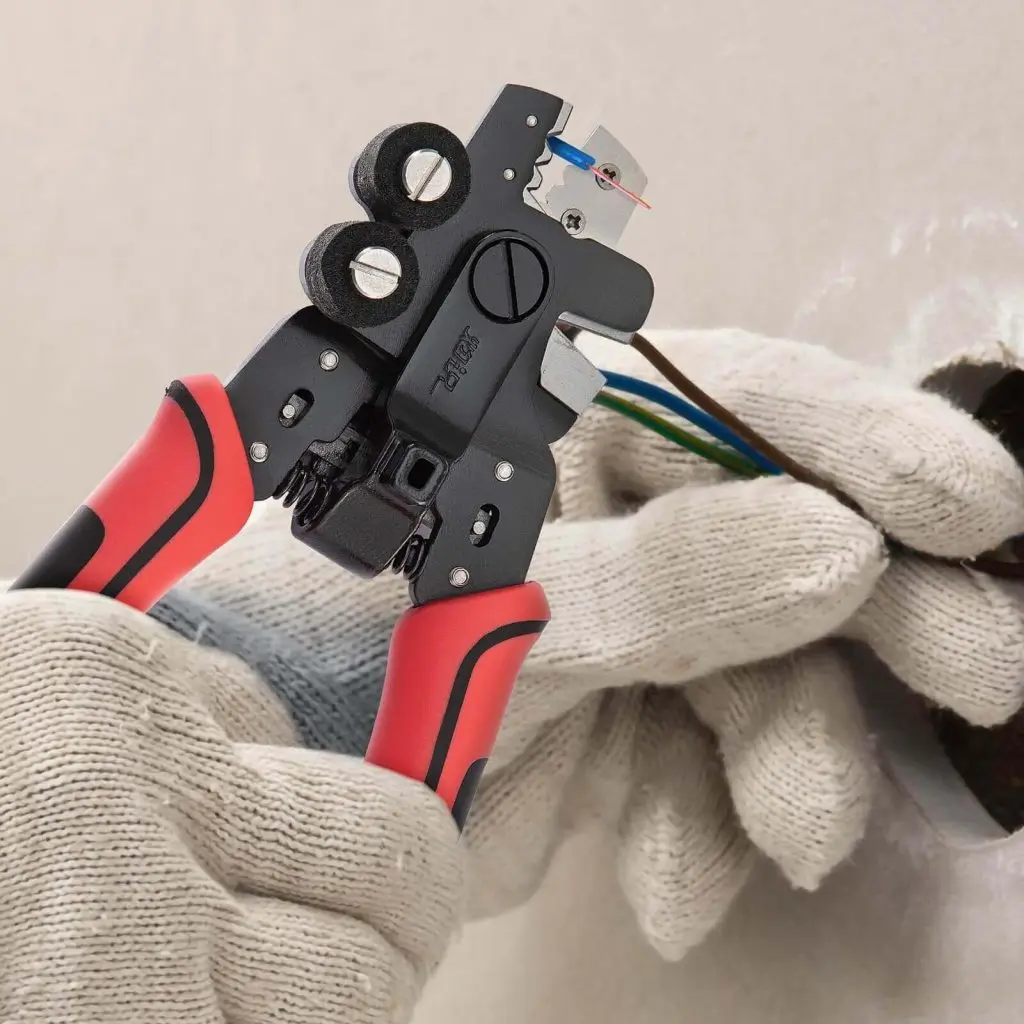Imagine you work in a warehouse where goods must be transported quickly among tall stacks of pallets. A forklift is what you need to effectively lift, transport, and position large items.
But while forklifts are essential and effective for these lifting roles, using them also requires attention to safety procedures. Accidents, injuries, and even fatalities can result from improper handling, which is why you need to learn the correct usage of the equipment.
This article gives a detailed explanation of how to use a forklift. We will also go over how to use forklift safety cages and the best brands to buy.
Table of contents
Understanding Forklifts
Understanding what a forklift is and its main use is crucial before going into the actual procedures for operating one. We have provided a little crash course on what you need to know about the tool, the various types, and more, in this section.
What is a Forklift?
Forklifts are strong industrial vehicles made to easily lift, carry, and position large objects. It is a necessary tool for handling commodities in places like shipping docks, building sites, and warehouses.
Definition and Purpose
A forklift, sometimes referred to as a lift truck, is a motorized vehicle with an adjustable height-pronged device in front. The main uses of a forklift are to stack and move bulky goods at different heights across short distances.
Types of Forklifts
There are various types of forklifts designed to meet different needs and purposes. Here are some of the most common types:
- Counterbalance forklift: It balances a weight at the back with a load at the front.
- Reach forklift: This is ideal for high-shelf warehouses since they can reach far into storage racks and have an increased lift height for narrow lanes.
- Pallet jack: This forklift transports pallets over a short distance. There are motorized and manual models for low-level lifting.
- Telehandler: With the use of their telescoping booms, telehandlers can raise objects to great heights and distances.
Key Components of a Forklift
The overall operation and efficiency of a forklift depend on every part of the equipment. These are some of the main components that make the equipment effective.
- Mast: The vertical structure raises and lowers the weight. Its lateral stability comes from interconnecting rails.
- Carriage: The forks and other attachments are positioned on the carriage, which is fastened to the mast.
- Forks: The forks are the two horizontal prongs that stick out of the transporter. They raise and move objects by sliding beneath them.
- Overhead guard: This is a construction resembling a metal roof, intended to protect the operator from falling debris.
- Operator can: This holds the pedals, levers, and steering wheel controls. This is where the forklift operator sits and operates the machine.
Preparing to Use a Forklift
Before you hop aboard a forklift and get to work, be sure you have the required training. It is also important to check that everything is in order before you begin operations. Let us go over the fundamental steps in getting ready to use a forklift.
Pre-Operational Checks
Check that the forklift is both safe to operate and in good operating order. These inspections help to discover any possible problems that have to be fixed before using the forklift.
Inspecting the Forklift
Look for any overt indications of aging or wear and tear, such as loose parts, broken tires, or leaks, before using the forklift.
Ensuring Proper Forklift Training
Forklift operation calls for specific training to protect both the operator and everyone on site. You should have the necessary training and certification before using a forklift.
Understanding Forklift Controls
You need to also get acquainted with forklift controls. Safe and successful usage of the controls depends on your understanding of what each part offers.
Basic Controls and Their Functions
Here are some of the basic controls you will find on a forklift and their functions.
- Steering wheel: This enables you to direct the forklift’s movement.
- Accelerator and brake pedals: They control the forklift’s speed and stopping.
- Lift and lower controls: This is used to pick up and place loads.
- Tilt control: It modifies the fork angle to tilt the load for stability, either forward or backward.
- Directional controls: To move, alternate between forward, reverse, and neutral gears.
Safety Features of Forklifts
While forklifts are effective, you want to ensure you use them safely to avoid workplace hazard. Follow the following safety measures when using forklifts as an operator to safeguard yourself and other people on the site, and to prevent mishaps:
- Use an overhead guard, as this shields the operator from falling debris.
- Always use your seat belt as it will hold you in place while working.
- Use a horn as it notifies other workers and passersby of the forklift’s presence.
- Activate the stability mechanisms, as this stops the forklift from overturning while in use.
How to Use a Forklift Safe Cage

At warehouses and construction sites, accessing high shelves or elevated areas safely might be difficult. Forklift safe cages provide a practical solution for lifting personnel to heights that are difficult to reach.
What is a Forklift Safe Cage?
A forklift safe cage is a robust, enclosed platform used to safely carry workers to heights. It acts as a secure workspace for tasks like inventory management, maintenance, and repairs.
Definition and Uses
A forklift safe cage is a metal cage that attaches to the forks of a forklift. The cage allows workers to perform tasks safely at height, reducing the risk associated with ladders or scaffolding. Forklift safe cages are commonly used for accessing high shelves in warehouses, cleaning industrial windows, and other high surfaces.
Importance of Forklift Safe Cages
Forklift safe cages have safety features to protect workers from falling. The cage is securely attached to the forklift, providing a stable platform for workers to stand on. Also, using a forklift safe cage allows workers to complete tasks more efficiently by providing easy access to high areas.
How to Attach a Forklift Safe Cage
The first step to safely and effectively using a forklift safe cage is learning how to attach it. Discover how to do this below.
Step-by-Step Guide to Securing the Cage
Here’s a step-by-step guide to help you attach the forklift cage correctly and ensure it remains stable and safe during use.
- Align the forklift forks in front of the cage entrances. Keep the ground level to avoid tilting.
- Slide forklift forks into cage fork compartments carefully. Ensure they finish to maximize support.
- Most forklift cages have locks or pins. These locks prevent the cage from falling off the forks during operation.
- Double-check the cage’s latches and forklift attachment after securing it.
- Test the lift before lifting staff. Check cage stability by raising it a few inches.
Ensuring Stability and Safety
- Make sure the cage, crew, and equipment don’t exceed the forklift’s capability.
- Maintain load balance. Centering the cage on the forks prevents tipping.
- Make sure the forklift operator and cage staff can communicate.
- Ensure staff wear safety gear.
Best Practices for Safe Operation
Here are some best practices to follow during the operation to ensure safety.
Lifting and Lowering Techniques
- Always lift and lower the cage smoothly.
- Start lifting and lowering at a slow, steady pace. This allows personnel to adjust and maintain their balance.
- Ensure the operator has a clear line of sight.
- Be aware of the maximum height limitations of the forklift and the work environment to avoid collisions with overhead structures.
Navigating with a Safe Cage
- Keep the cage stable with wide, gentle rotations.
- When entering narrow spaces or around obstacles, decelerate the forklift.
- Turn on the forklift’s horn when reversing or approaching blind corners to warn others.
- Do not drive on inclines or uneven surfaces with the cage raised.
Common Mistakes to Avoid
When using a forklift safe cage, there are some common mistakes to avoid to ensure safety. Here are frequent errors some operators make and how to prevent them.
Overloading the Cage
Overweighting can cause instability, tipping, and serious accidents. Verify the forklift and safe cage’s maximum load capacity to avoid this. Also, distribute the load equally to avoid an imbalance.
Improper Positioning
Accidents and inefficiency might result from improper forklift and safe cage positioning. Forklift forks should be fully put into cage fork pockets. Avoid tipping and rolling by placing the forklift on a flat, sturdy surface.
Safety Tips and Guidelines
Using forklift safe cages safely requires adherence to several key safety practices. Discover them below.
Personal Protective Equipment (PPE)
Workers must use proper PPE to avoid dangers. Helmets, safety harnesses, gloves, and boots protect against falls, wounds, and impact.
Regular Maintenance and Inspections
- Conduct daily inspections of the forklift and cage to identify any damage or wear.
- Follow a routine maintenance schedule to keep the equipment in optimal condition.
- Keep a log of any issues found and the repairs carried out.
Emergency Procedures
Knowing how to respond in an emergency can make a significant difference in reducing harm and ensuring a swift resolution.
What to Do in Case of an Accident
- Immediately halt the forklift and lower the cage safely.
- Provide first aid to any injured personnel while waiting for professional medical help.
- If the situation requires, evacuate the area to ensure everyone’s safety.
Reporting and Documentation
- Inform your supervisor and the safety officer about the accident as soon as possible.
- Record all relevant details, including the time, location, nature of the accident, and any injuries sustained.
Why Choose VEVOR Forklift Safe Cages?
When it comes to choosing a forklift safe cage, there are several options for intending buyers. However, we recommend the VEVOR forklift safe cage. We will shed more light on why we think VEVOR forklift safety cages are your best bets below.

High-Quality Materials and Construction
The superior materials and sturdy construction of VEVOR forklift cages make them durable. The cages are also equipped with a galvanized surface that withstands rust and corrosion. Hence, they will remain reliable and effective even in harsh operating conditions.
Enhanced Safety Features
Working at heights requires safety, and VEVOR forklift safe cages ensure this. On the platform of the cages, a nonslip pattern design reduces the possibility of slipping and falling. Working with instruments or moving goods at heights makes this especially crucial.
Customer Satisfaction
VEVOR forklift safe cages are easy to attach to any standard forklift or pallet loader, transforming your forklift into a versatile workstation with minimal effort. The cages are useful for firms with limited space since they can be folded for small storage when not in use.
Conclusion
Using a forklift safe cage safely and successfully calls for close attention to safety procedures and having a deep knowledge of the equipment. Pre-operational inspections of the forklift and cage, as well as appropriate operator training, are all critical. Following these guidelines can help you greatly lower hazards and guarantee a productive workplace.Purchasing a quality forklift safe cage is one way to maintain the highest safety standards.
This is why we recommend that you choose VEVOR forklift safe cages. With these tools, you are getting top security, durability, quality, and even value for money in just one product. Visit the VEVOR website now to make an order for an equipment that will guarantee safe aerial projects at all times.





